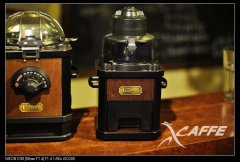The influence of the water content of coffee beans and the external environment on the formation of spices during roasting
The main purpose of this paper is to explore the effects of various roasting conditions on the production of coffee flavor. In the aspect of fragrance analysis, the aromatic compounds were extracted by steaming, then dissolved and extracted, and then qualitatively and quantitatively analyzed by GC and GC-MS.
In the roasting environment, the practice shows that the oxygen environment has an obvious promoting effect on the aroma formation in the initial stage of coffee roasting, while it will promote the oxidative cracking or polymerization of explosive compounds at the end of roasting, thus reducing the content of sporadic compounds. On the other hand, the environment of carbon dioxide is disadvantageous to the formation of aromatic compounds. In the initial stage of roasting, the organic environment of air tank contains oxygen, so it also has a promoting effect on the reaction of incense; at the end of roasting, the polymerization of aromatic compounds is not clear, so the content of sporadic compounds is high. The nitrogen environment has little effect on the formation of coffee bean aroma.
In terms of the most optimal roasting conditions, when the coffee was roasted under the conditions of 12.8% moisture content of coffee beans, 218.83C roasting degree and 17.38 min roasting time, the best quality results could be obtained. in practice, roasting time has the greatest effect on the results, followed by roasting degree, and the shadow of moisture content is small. When the content of aromatic compounds was used as the response value, the highest content of volatile compounds could be obtained when the coffee was roasted under the conditions of 16.67% moisture content of coffee beans, 227.23 C roasting degree and 17.77 min roasting time. In terms of the total amount of volatile compounds, the shadow between roasting time was the largest, and the roasting degree was the second, but there was a big difference between each factor and the content of other functional bases.
During the roasting process of coffee beans, the components of coffee beans decreased with the increase of roasting time, especially soluble carbohydrates and free amino acids decreased more rapidly, while the content of aromatic compounds increased first. at the end of roasting, it may be decreased due to the oxidative polymerization of sporadic compounds. In terms of the reaction of aromatics, the reaction of carbohydrates and amino acids was most intense in the early and middle stages of roasting of coffee beans, and the carbohydrate and caramylation reaction was dominant in the middle and late stages of roasting.
In terms of different coffee beans, after roasting under the same roasting conditions, Java coffee had the highest total content of volatile compounds (747.15ppm), while Mandrake coffee had the lowest (428.09ppm). In terms of the composition of sporadic compounds, furans was the highest in all roasted coffee beans (about 52-75%), in which the content of furfuryl alcohol was as high as 25-38% in all coffee beans, indicating the cleavage of carbohydrate, which was the main aroma component of roasted coffee beans. In terms of composition analysis, it was also found that there was a clear correlation between the content of protein and amino acid and the content of aromatic compounds. In addition, the percentage of pyrazine, pyrrol and ketone compounds in coffee beans increased while the percentage of furan compounds decreased when the content of thiamine acid was high, so the roasted taste of coffee beans with high amino acid content increased after roasting, while the flavor of caramel decreased.
Important Notice :
前街咖啡 FrontStreet Coffee has moved to new addredd:
FrontStreet Coffee Address: 315,Donghua East Road,GuangZhou
Tel:020 38364473
- Prev

Grinding effect of South Korea ICOFFEE Coffee Grinder
ICOFFEE N901CR series also has a bean grinder, feel very matching and curious into two to see the performance is still retro style ICOFFEE N901CR the same series of bean grinder, this machine is also a wonderful work in the bean grinder. It is gratifying to note that the uniformity of the grinding is very good, and there is almost no flour (the very fine residual powder that many players taboo).
- Next

Test report on coffee bean cups produced in East Africa
The characteristics of good coffee produced in East Africa are so strong that coffee from other regions of the world is relatively mild, such as Kenya's super-full wine flavor and Ethiopian Yega Snow Coffee, which is full of amazing floral aromas. these are examples of this kind of strong performance, and it is almost impossible to find a coffee produced in East Africa that is mild.
Related
- Guji coffee producing area of Guji, Ethiopia: Humbela, Shakiso, Wulaga
- What is the most expensive variety of Qiloso in BOP multi-variety group?
- How to store the coffee beans bought home?
- Why are Yemeni coffee beans so rare now?
- Ethiopian Sidamo all Red Fruit Sun Sun Santa Vini Coffee beans
- SOE is mostly sour? What does it mean? Is it a single bean? what's the difference between it and Italian blending?
- Is Italian coffee beans suitable for making hand-brewed coffee?
- How to choose coffee beans when making cold coffee? What kind of coffee beans are suitable for making cold coffee?
- Just entered the pit to make coffee, what kind of coffee beans should be chosen?
- Can only Japan buy real Blue Mountain Coffee? What are authentic Jamaican Blue Mountain coffee beans?

